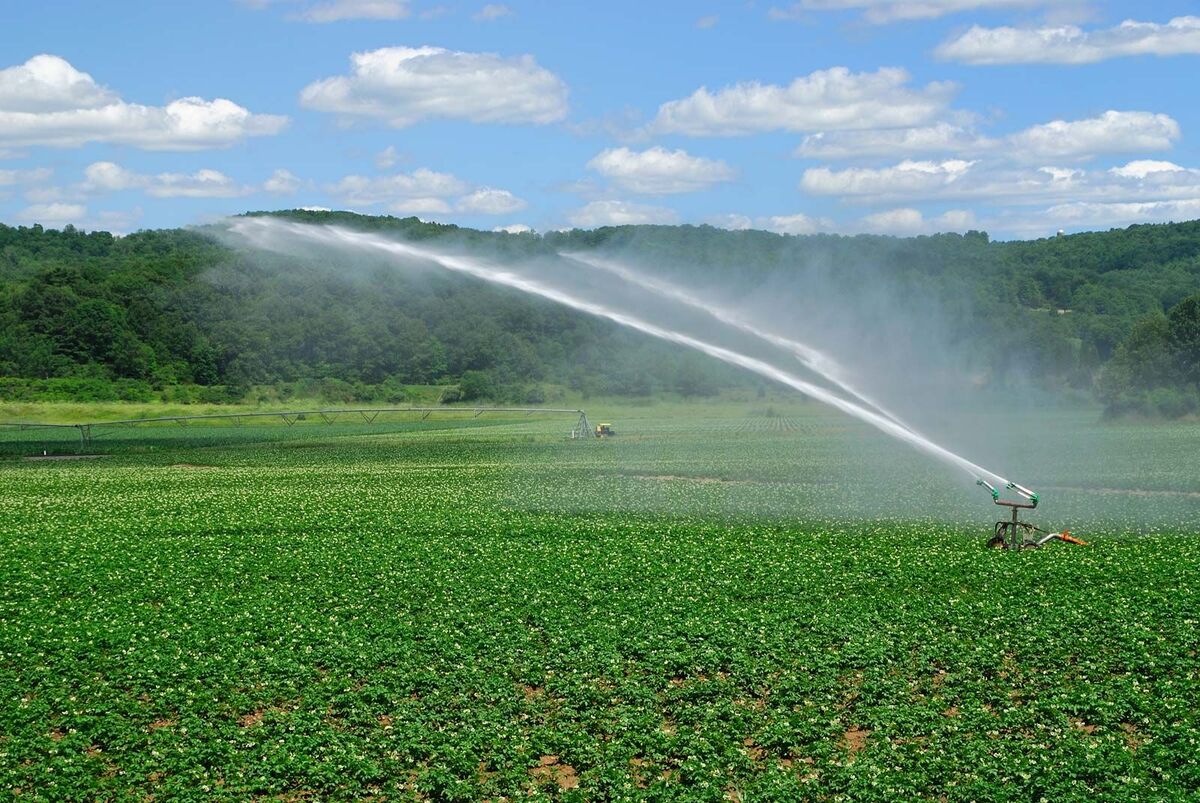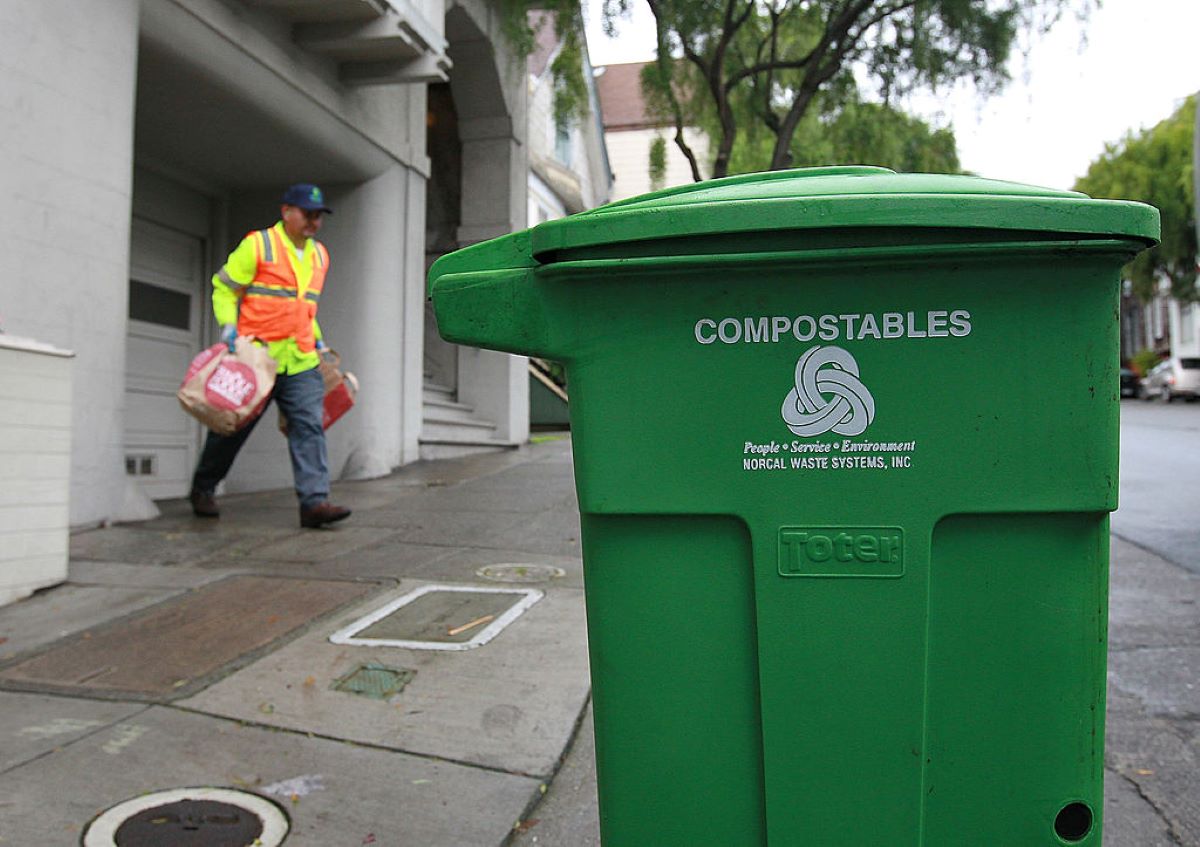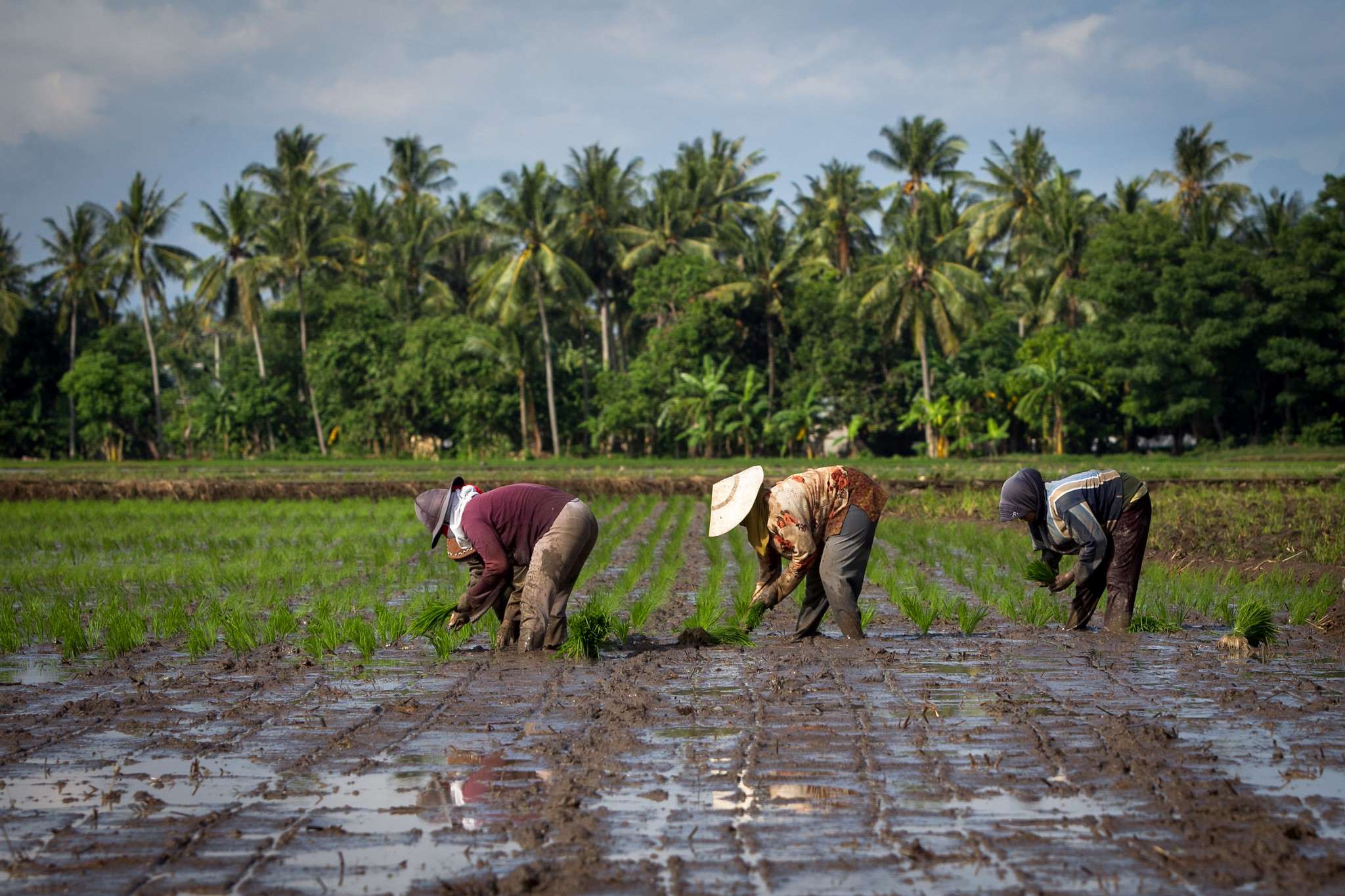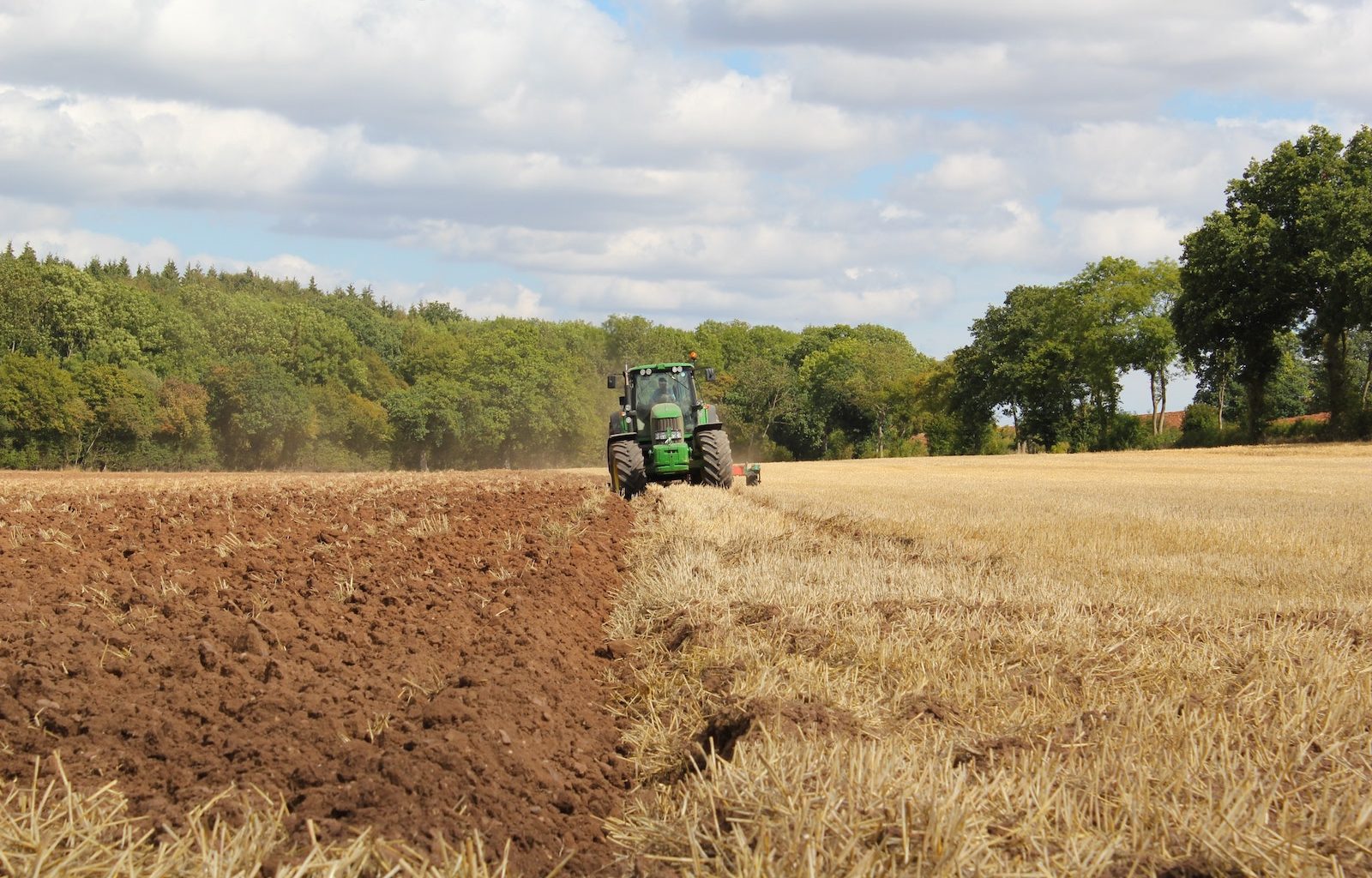Home>Gardening News and Trends>Latest News>What Percentage Of Freshwater Use Goes To Agricultural Irrigation?


Latest News
What Percentage Of Freshwater Use Goes To Agricultural Irrigation?
Modified: January 22, 2024
Discover the latest news on agricultural irrigation and find out what percentage of freshwater is used for this purpose. Stay informed with the latest updates.
(Many of the links in this article redirect to a specific reviewed product. Your purchase of these products through affiliate links helps to generate commission for Chicagolandgardening.com, at no extra cost. Learn more)
Table of Contents
- Introduction
- The Importance of Freshwater Use in Agriculture
- Factors Influencing Agricultural Water Usage
- The Global Percentage of Freshwater Used for Agricultural Irrigation
- Regional Variations in Agricultural Water Usage
- Impact of Agricultural Water Usage on Freshwater Resources
- Sustainable Water Management in Agriculture
- Conclusion
Introduction
Freshwater is a vital resource that plays a crucial role in supporting life on Earth. From sustaining ecosystems to meeting human needs, access to clean freshwater is essential. One of the major sectors that heavily relies on freshwater is agriculture. Agricultural irrigation involves the intentional application of water to crops to ensure their growth and productivity.
This article will delve into the percentage of freshwater that is used for agricultural irrigation, highlighting its significance in global water usage. We will explore the factors that influence agricultural water usage, regional variations in water consumption, and the impact of this usage on freshwater resources. Additionally, we will discuss the importance of sustainable water management practices in agriculture.
A crucial aspect of understanding the role of agriculture in freshwater usage is recognizing the critical link between food production and water resources. As the global population continues to grow, the demand for food increases, and so does the need for water in agriculture. Therefore, exploring the percentage of freshwater used for agricultural irrigation is fundamental in assessing the sustainability of our water resources and food production systems.
By gaining insights into the magnitude of freshwater usage in agriculture, we can better comprehend the challenges and opportunities for sustainable water management in this sector. This knowledge is imperative for policymakers, water resource managers, and farmers to make informed decisions regarding water allocation and conservation strategies.
In the subsequent sections, we will delve into the importance of freshwater use in agriculture, the factors influencing agricultural water usage, the global percentage of freshwater used for irrigation, regional variations in water consumption, the impact of agricultural water usage on freshwater resources, and the practices promoting sustainable water management in agriculture.
The Importance of Freshwater Use in Agriculture
Freshwater is an essential resource for agriculture as it plays a vital role in the growth and development of crops. Agricultural irrigation ensures that crops receive adequate water to maintain optimal health, maximize yield, and ensure food security. Without sufficient water, crops can wither, affecting not only the livelihoods of farmers but also the availability and affordability of food for communities.
Agriculture is the largest consumer of freshwater globally, accounting for a significant portion of water usage. Approximately 70% of global freshwater withdrawals are directed towards agricultural irrigation. This staggering figure emphasizes the indispensability of agricultural water use in meeting the ever-increasing demand for food.
Efficient water management in agriculture is crucial for several reasons. First and foremost, it supports global food production. As the world population grows, so does the need for sustainable agricultural practices that can ensure sufficient food supplies. With limited arable land, efficient irrigation systems help maximize crop productivity and mitigate the risks associated with water scarcity and climate change.
Moreover, freshwater use in agriculture goes beyond crop irrigation. It is also used in livestock farming, aquaculture, and agro-industrial processes. Water is essential for the rearing of animals, maintaining hygiene, and processing agricultural products. Therefore, optimizing water use in agriculture contributes to the overall efficiency and sustainability of the entire food production chain.
Furthermore, the importance of freshwater use in agriculture extends to environmental considerations. Sustainable irrigation practices can help preserve ecosystems, maintain water quality, and reduce pressure on freshwater resources. By employing water-efficient techniques, such as drip irrigation or precision agriculture, farmers can minimize water wastage, reduce the need for chemical inputs, and safeguard the health of rivers, lakes, and groundwater systems.
It is crucial to recognize that the significance of freshwater use in agriculture extends far beyond immediate agricultural production. It has wide-ranging implications for food security, economic stability, environmental conservation, and global sustainability efforts. Therefore, ensuring effective and sustainable water management practices in agriculture is of utmost importance for the well-being of both current and future generations.
Factors Influencing Agricultural Water Usage
Agricultural water usage is influenced by a myriad of factors that vary depending on the region, crop type, and farming practices. These factors shape the amount of water required for irrigation and impact the overall efficiency and sustainability of water use in agriculture.
One of the primary factors that influence agricultural water usage is climate. Regions with arid or semi-arid climates experience higher water demands due to lower rainfall and higher evaporation rates. In these regions, crop irrigation becomes essential to supplement natural water availability and ensure adequate plant growth.
The type of crop being cultivated also plays a significant role in determining water usage. Different crops have varying water requirements at different stages of growth. For example, rice cultivation requires large amounts of water due to its prolonged flooding irrigation method, while drought-tolerant crops like millet or sorghum require significantly less water.
Farming techniques and irrigation practices also influence agricultural water usage. Traditional flood irrigation methods, where fields are flooded with water, may result in substantial water losses due to evaporation and runoff. In contrast, modern irrigation techniques, such as drip or sprinkler irrigation systems, allow for more targeted water application, reducing wastage and increasing efficiency.
Soil characteristics, including its texture and water-holding capacity, also impact agricultural water usage. Sandy soils generally allow water to drain quickly, requiring more frequent irrigation, while clay soils retain water for longer periods, reducing the need for regular watering.
Economic factors also come into play when considering agricultural water usage. The availability and affordability of water resources, the cost of water infrastructure, and the profitability of crops all influence farmers’ decisions on irrigation methods and water usage. In some cases, economic incentives or regulations may encourage farmers to adopt water-saving techniques or invest in technologies that improve irrigation efficiency.
Furthermore, access to water resources and irrigation infrastructure is crucial. Regions with limited access to reliable water sources or inadequate irrigation systems may face challenges in meeting their agricultural water requirements. Lack of infrastructure or poor maintenance can result in water losses, inefficient water distribution, and increased water usage for irrigation.
Overall, agricultural water usage is influenced by a complex interplay of climatic, crop-related, technical, economic, and infrastructural factors. Understanding these factors is essential for developing tailored and effective water management strategies that promote sustainable agriculture and mitigate the impacts of water scarcity and climate change on food production.
The Global Percentage of Freshwater Used for Agricultural Irrigation
Agricultural irrigation accounts for a significant proportion of global freshwater usage. Approximately 70% of the world’s freshwater withdrawals are directed towards agriculture. This highlights the crucial role that irrigation plays in food production and the overall demand for freshwater resources.
The exact percentage of freshwater used for agricultural irrigation varies across countries and regions. In some water-stressed regions, the percentage can be much higher than the global average, reaching up to 90% of freshwater withdrawals. Developing countries with a high reliance on agriculture tend to have a larger portion of freshwater dedicated to irrigation compared to industrialized nations.
Several factors contribute to the significant percentage of freshwater used for agricultural irrigation on a global scale. The growing global population and the increasing demand for food necessitate higher agricultural production, which, in turn, requires more water for irrigation. As a result, the percentage of freshwater used for irrigation is likely to continue growing in the future.
Furthermore, the intensification of agriculture and the expansion of irrigated land contribute to the higher demand for freshwater resources. As farmers strive to maximize yields and meet market demands, they often expand their irrigated areas, putting additional pressure on available water supplies.
The distribution of freshwater resources also plays a role in the percentage of water used for irrigation. Countries with abundant water resources are more likely to allocate a larger percentage of freshwater to agriculture. In contrast, countries facing water scarcity may need to adopt more water-efficient agricultural practices or focus on less water-intensive crops.
Efforts to increase water-use efficiency in agriculture, such as promoting water-saving irrigation techniques and implementing irrigation scheduling strategies, can help optimize freshwater use. These practices aim to minimize water losses through evaporation, improve soil moisture management, and reduce overwatering.
It is important to note that while agricultural irrigation accounts for a significant percentage of freshwater usage, it also contributes to food security and economic development. However, the sustainable use of freshwater resources in agriculture is crucial to balance the needs of crop production, environmental conservation, and water availability for other sectors.
Addressing the challenges of water scarcity, climate change, and population growth requires careful management and allocation of freshwater resources. Investing in water-efficient technologies, promoting sustainable agricultural practices, and implementing effective water governance can help ensure the sustainable use of freshwater for agricultural irrigation while safeguarding the long-term availability of this vital resource.
Regional Variations in Agricultural Water Usage
Agricultural water usage varies across regions due to diverse climatic conditions, water availability, farming practices, and economic factors. These variations highlight the importance of considering regional context when analyzing water use in agriculture and developing appropriate water management strategies.
In regions with abundant water resources, such as parts of Europe and North America, agricultural water usage tends to be relatively high. This can be attributed to the availability of surface water and extensive irrigated areas. These regions often have well-developed irrigation infrastructure, enabling farmers to rely on irrigation for crop production.
Conversely, arid and semi-arid regions, including areas in Africa, the Middle East, and parts of Asia, face significant water scarcity challenges. In these regions, agriculture often competes with other sectors for limited water resources. As a result, farmers may utilize water-saving techniques like drip irrigation or adopt drought-resistant crop varieties to minimize water requirements.
Furthermore, the type of agriculture practiced in a region also influences water usage. In water-rich regions, agriculture may include water-intensive crops like rice or cotton, which require substantial amounts of water for irrigation. On the other hand, regions with water scarcity may focus on cultivating drought-tolerant crops or rely on rainfed agriculture.
Economic factors also contribute to regional variations in agricultural water usage. In some areas, agriculture may be the main economic activity, and water resources are allocated to support intensive farming practices. However, in regions with a more diverse economy, water allocation decisions may be influenced by competing demands from other sectors, such as industry or domestic use.
Policy and governance frameworks also shape regional variations in agricultural water usage. Some regions have implemented regulations to promote sustainable water use in agriculture, encouraging farmers to adopt water-efficient technologies and practices. These policies often reflect local water availability and the importance of agriculture in the regional economy.
It is important to note that regional variations in agricultural water usage can change over time. Factors such as population growth, climate change, and shifts in farming practices can influence water demands. As water resources become scarcer and the need for sustainable water management intensifies, regions may adopt strategies to improve water-use efficiency and reduce the impact of agriculture on freshwater resources.
An understanding of these regional variations is crucial for the development of targeted water management policies and practices. Tailoring approaches to specific regional needs can help optimize water use in agriculture, address local challenges, and ensure the long-term sustainability of both water resources and food production.
Impact of Agricultural Water Usage on Freshwater Resources
Agricultural water usage has a significant impact on freshwater resources, affecting both the quantity and quality of available water. Understanding these impacts is crucial for managing water resources sustainably and preserving the health of ecosystems.
One of the primary impacts of agricultural water usage is the depletion of freshwater supplies. Excessive irrigation can lead to the overextraction of groundwater, causing groundwater levels to decline. This not only affects the availability of water for irrigation but also disrupts the natural flow of water in aquifers, potentially leading to the deterioration of water quality and the loss of critical habitats.
Additionally, inefficient irrigation practices can result in water wastage and runoff, leading to the contamination of surface water bodies and groundwater through the leaching of agricultural chemicals, including fertilizers and pesticides. These pollutants can enter waterways, affecting aquatic ecosystems and potentially posing risks to human health.
Water-intensive crops and extensive irrigation may also contribute to the degradation of ecosystems by reducing water flow in rivers and wetlands. These ecosystems provide crucial ecological services, including water filtration, flood regulation, and habitat for numerous species. Reduced water flow can disrupt these services, leading to the loss of biodiversity and the degradation of ecosystem health.
Moreover, agricultural water usage influences the hydrological cycle, with potential implications for local and regional climate patterns. Large-scale evaporation from irrigated fields can contribute to increased humidity and cloud formation in surrounding areas. This can alter precipitation patterns and atmospheric conditions, with potential effects on regional climate and water availability.
Addressing these impacts requires the implementation of sustainable water management practices in agriculture. Promoting water-use efficiency through the adoption of efficient irrigation technologies, proper water scheduling, and precision farming techniques can help minimize water waste and reduce the pressure on freshwater resources.
Implementing best management practices, such as integrated pest management, nutrient management, and erosion control, can also help reduce the use of agrochemicals and mitigate water pollution. Conserving and restoring natural habitats, such as wetlands and riparian zones, can further enhance water quality and support biodiversity.
Collaboration between policymakers, water resource managers, farmers, and local communities is vital for developing and implementing effective water management strategies. By prioritizing sustainability and considering the ecological and social dimensions of agricultural water usage, we can foster the coexistence of thriving agricultural systems and healthy freshwater ecosystems.
Sustainable Water Management in Agriculture
Sustainable water management in agriculture is crucial to ensure the responsible use of freshwater resources, support food production, and protect the environment. By adopting water-efficient practices and implementing innovative solutions, farmers and policymakers can promote agricultural sustainability and resilience in the face of water scarcity and climate change.
One key aspect of sustainable water management is the adoption of efficient irrigation techniques. Drip irrigation and sprinkler systems deliver water directly to the root zone of plants, reducing water loss through evaporation and runoff. These methods not only conserve water but also improve nutrient uptake and reduce the risk of plant diseases.
Another approach is the implementation of precision agriculture, using technology and data to optimize water and fertilizer application. Soil moisture sensors, remote sensing, and real-time weather data allow farmers to irrigate according to the specific needs of crops, avoiding overwatering and minimizing resource waste.
Integrated water resource management is essential for ensuring the sustainable use of water in agriculture. This approach involves considering all water users, including farmers, municipalities, and ecosystems, and finding ways to allocate water equitably and efficiently. It also involves managing water throughout the entire water cycle, from sourcing to the treatment and reuse of wastewater.
Incorporating conservation practices, such as cover cropping, crop rotation, and terracing, can enhance soil health and water retention, reducing the need for irrigation. These practices improve the soil’s ability to absorb and store water, allowing for more efficient use and reducing runoff and erosion.
Educating and training farmers on sustainable water management practices is instrumental in promoting change at the grassroots level. Providing resources, information, and incentives can empower farmers to adopt water-saving technologies and practices that align with their specific agricultural contexts.
Collaboration between different stakeholders is crucial for implementing sustainable water management in agriculture. Engaging farmers, researchers, policymakers, water resource managers, and the local community fosters a holistic approach to water management. This collaboration can help identify local challenges, develop appropriate policies, and implement effective water-saving strategies.
Investments in water infrastructure are necessary to support sustainable water management in agriculture. Improving water storage, distribution networks, and irrigation systems can reduce water losses and improve efficiency. The promotion of rainwater harvesting and the use of treated wastewater for irrigation also contribute to sustainable water management practices.
Lastly, raising awareness about the importance of water conservation in agriculture is crucial for fostering a culture of responsible water use. Public campaigns, educational programs, and incentives can encourage individuals and communities to make conscious decisions about water consumption, supporting sustainable practices in agriculture and beyond.
Conclusion
Freshwater use in agriculture is a significant and complex issue with far-reaching implications. The percentage of freshwater dedicated to agricultural irrigation highlights the critical role that water plays in food production and the importance of sustainable water management practices.
As the global population grows and the demand for food increases, it is crucial to prioritize efficient and responsible water use in agriculture. By adopting water-saving irrigation techniques, precision farming practices, and conservation measures, we can minimize water waste, protect water quality, and improve the overall efficiency of crop production.
Regional variations in agricultural water usage are influenced by factors such as climate, economic considerations, farming practices, and water availability. Understanding these variations is key to developing targeted water management strategies that address local challenges and promote sustainable water use.
Agricultural water usage has a significant impact on freshwater resources, including the depletion of groundwater, water pollution from agrochemicals, and the disruption of ecosystems. By adopting sustainable water management practices, such as efficient irrigation, integrated water resource management, and conservation practices, we can mitigate these impacts and protect both water resources and the environment.
Sustainable water management in agriculture requires collaboration between farmers, policymakers, water resource managers, and local communities. By working together and sharing knowledge and resources, we can develop and implement effective water management strategies that balance the needs of food production, livelihoods, and ecological sustainability.
Ultimately, the goal of sustainable water management in agriculture is to ensure the long-term availability of freshwater resources, support food security, and protect the health of ecosystems. By prioritizing responsible water use and adopting innovative solutions, we can create a more sustainable and resilient future for agriculture and safeguard this vital resource for generations to come.








